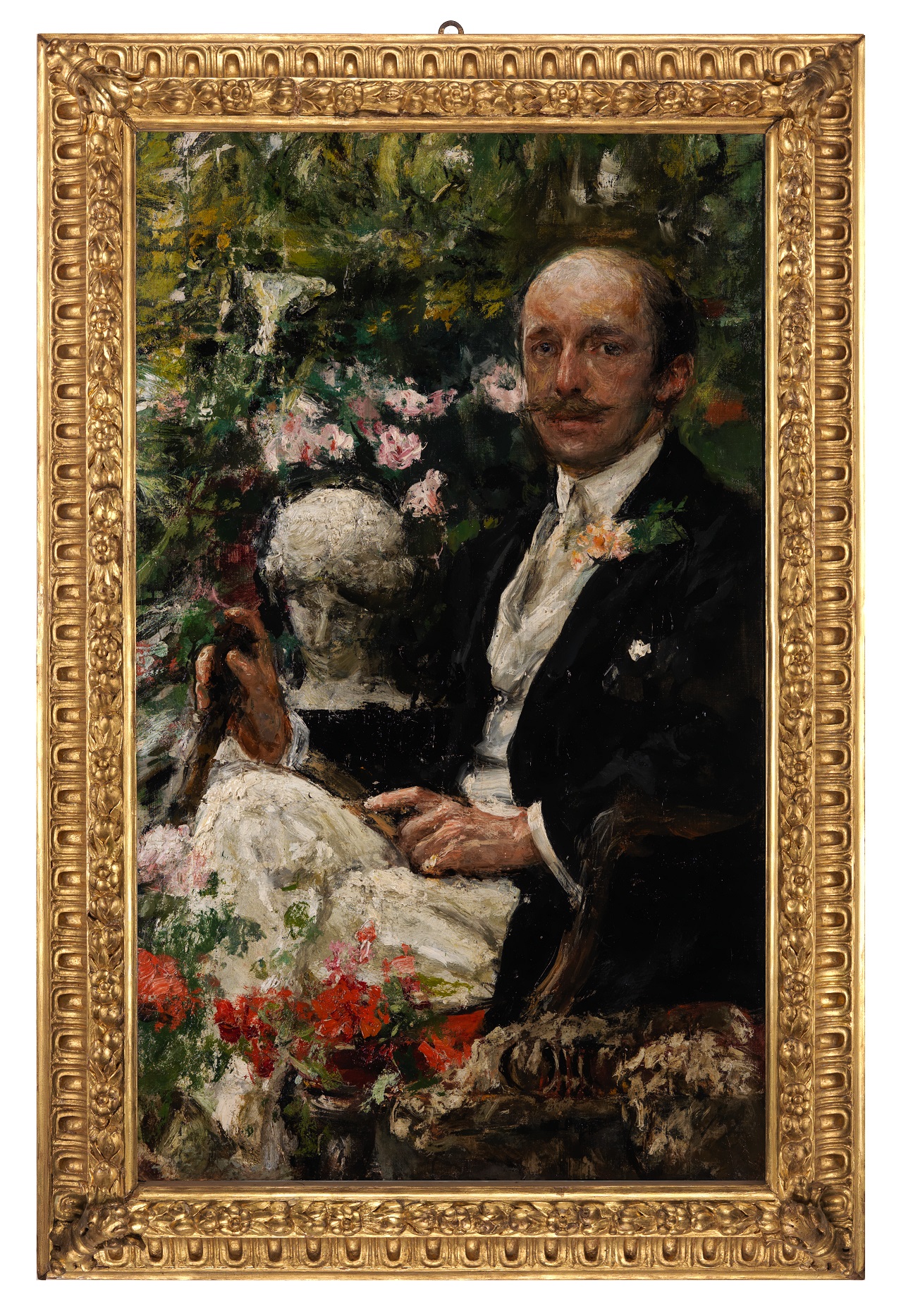 Eustis Estate
Eustis Estate
Mancini

The intensity and diversity of Antonio Mancini’s techniques stemmed not only from his innate genius and awareness of modernist practices emerging across Europe, but also, at least in part, from his ongoing struggle with a psychotic disorder, which led to his stay in a Neapolitan asylum in 1881–82. Until late in his life, Mancini was often destitute and relied upon his friends and patrons to survive. His experiments with unorthodox processes included the perspective grid described elsewhere in this section and also the dipping of his fingers into paint to quickly adorn blank dinner plates, which he would give to restauranteurs in exchange for meals.
Unconventional as Mancini’s technique and personality were, Richard Norton probably had many reasons to commission the Italian artist to paint his portrait. The revered American painter John Singer Sargent had long admired Mancini’s talent and encouraged other Bostonians to hire him. Norton probably had seen the earlier portrait of John Lowell “Jack” Gardner, which his renowned collector wife, Isabella Stewart Gardner, had commissioned Mancini to paint in Venice at Sargent’s suggestion. The two portraits are approximately the same size, but Norton’s – made a decade later – is more adventurous: he is surrounded by lush flowers (including a corsage pinned to his lapel) and by a classical marble head signifying his expertise in ancient art. Both men hold a walking stick (then a hallmark of gentility), yet Norton’s spiffy white suit and cream-colored tie, crossed legs, and direct gaze at the viewer telegraph a sense of cosmopolitan ease not present in Gardner’s stiff pose and aloof three-quarter profile.